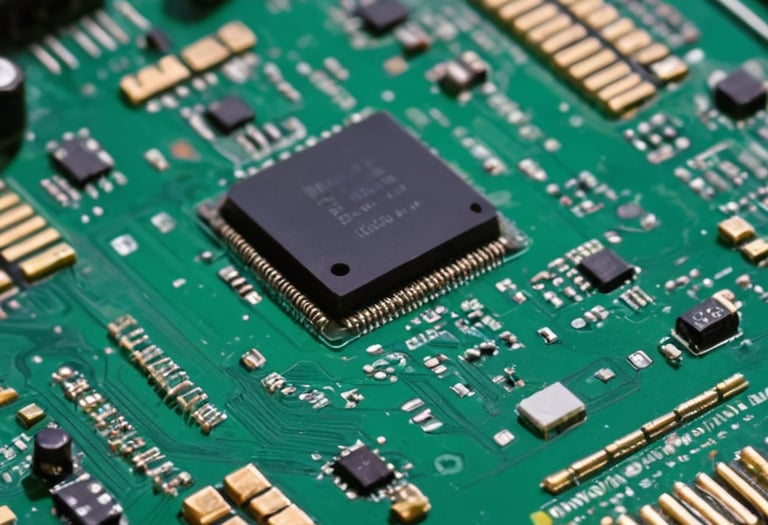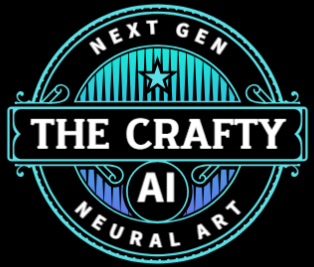The History and Evolution Of Artificial Intelligence
Discover AI's journey from ancient myths to 2020s innovations in "AI's Evolution: From Concept to Breakthrough." Explore milestones like Turing's theories, the Dartmouth Conference, deep learning, and modern uses in healthcare and finance, plus ethical challenges and future potential.
EVOLUTION OF AI
The journey of Artificial Intelligence (AI) from a theoretical concept to a transformative force reshaping society is a remarkable saga of innovation, perseverance, and breakthroughs. Spanning decades, AI’s evolution has transitioned from philosophical musings to practical applications that now permeate daily life, from virtual assistants to autonomous vehicles. This blog traces AI’s historical roots, pivotal milestones, key technological advancements, and the breakthroughs that have cemented its role in the modern world, while exploring its future potential and challenges.
The Conceptual Dawn: 1940s–1950s
AI’s origins lie in the mid-20th century, rooted in the quest to understand human intelligence and replicate it in machines. In 1943, Warren McCulloch and Walter Pitts published a seminal paper modeling neural networks, inspired by the human brain, laying the theoretical groundwork for AI. Their work proposed that simple computational units could mimic neural processes, sparking interest in machine intelligence.
The term “Artificial Intelligence” was coined in 1956 by John McCarthy at the Dartmouth Conference, a landmark event that formalized AI as a field. Attendees, including Marvin Minsky and Claude Shannon, envisioned machines that could reason, learn, and solve problems like humans. Early optimism was high, with predictions that AI would soon rival human intelligence. However, limited computing power and data constrained progress, leading to modest initial achievements.
Milestone: The Turing Test (1950)
Alan Turing’s “Computing Machinery and Intelligence” introduced the Turing Test, a benchmark for assessing machine intelligence. If a machine could convincingly mimic human responses in a text-based conversation, it could be deemed “intelligent.” This concept shaped early AI goals, emphasizing reasoning and interaction.
The First Wave: Rule-Based Systems (1960s–1980s)
Early AI focused on rule-based systems, where programmers explicitly coded knowledge and logic. These “expert systems” excelled in narrow domains, such as medical diagnosis or chess. In 1965, Joseph Weizenbaum’s ELIZA, a chatbot mimicking a therapist, demonstrated basic NLP, though it relied on simple pattern-matching rather than true understanding.
The 1980s saw a surge in expert systems, driven by increased computing power. MYCIN, developed at Stanford, diagnosed bacterial infections with accuracy rivaling human doctors by using predefined rules. Similarly, IBM’s Deep Thought defeated chess grandmasters, showcasing AI’s potential in structured tasks.
Challenges: Rule-based systems were brittle, requiring exhaustive manual coding and struggling with ambiguity or unprogrammed scenarios. This led to the first “AI winter” in the late 1980s, as overhyped promises met technological limitations, causing funding and interest to wane.
The Machine Learning Revolution: 1990s–2000s
The 1990s marked a shift from rule-based AI to machine learning (ML), where systems learn from data rather than explicit programming. This pivot was fueled by advances in algorithms, computing power, and data availability. Key developments included:
Neural Networks Revived: Backpropagation, introduced by Rumelhart and Hinton in 1986, enabled neural networks to learn complex patterns by adjusting weights based on errors. Though computationally intensive, this laid the foundation for modern deep learning.
Statistical ML: Algorithms like support vector machines and decision trees enabled AI to tackle tasks like spam detection and image recognition. IBM’s Deep Blue defeated chess champion Garry Kasparov in 1997, using a combination of search algorithms and heuristics.
Case Study: Netflix’s Recommendation Engine
In the 2000s, Netflix leveraged ML to personalize movie recommendations, analyzing user ratings to predict preferences. The 2006 Netflix Prize competition spurred innovation in collaborative filtering, boosting accuracy and demonstrating ML’s commercial potential.
Breakthrough: The rise of big data and GPUs (graphics processing units) in the 2000s accelerated ML. GPUs enabled parallel processing, making neural network training feasible, while the internet provided vast datasets, setting the stage for the next leap.
Deep Learning and the AI Boom: 2010s
The 2010s marked AI’s breakthrough era, driven by deep learning, a subset of ML using multi-layered neural networks. Three factors catalyzed this revolution: massive datasets, powerful GPUs, and algorithmic advances like convolutional neural networks (CNNs) and recurrent neural networks (RNNs).
Image Recognition: In 2012, AlexNet, a deep CNN, won the ImageNet competition, achieving unprecedented accuracy in image classification. This demonstrated deep learning’s ability to surpass human performance in visual tasks.
Natural Language Processing: Google’s Word2Vec (2013) and later Transformer models revolutionized NLP, enabling machines to understand context and generate human-like text. This paved the way for chatbots like Google Assistant and language models like BERT.
Reinforcement Learning: DeepMind’s AlphaGo (2016) defeated world champion Lee Sedol in Go, a game far more complex than chess. Using reinforcement learning, AlphaGo learned strategies through trial and error, showcasing AI’s ability to master abstract tasks.
Case Study: Tesla’s Autopilot
Tesla’s Autopilot system, introduced in 2015, uses deep learning to process data from cameras and sensors, enabling semi-autonomous driving. By 2025, Tesla’s neural networks analyze billions of miles of driving data, improving safety and paving the way for fully autonomous vehicles.
Impact: The 2010s saw AI permeate industries. Healthcare adopted AI for diagnostics (e.g., Google Health’s cancer detection), finance used it for fraud detection, and retail leveraged recommendation systems. AI became a household term, with virtual assistants like Alexa becoming ubiquitous.
Generative AI and Multimodal Systems: 2020s
The 2020s ushered in generative AI, capable of creating content like text, images, and music. Models like OpenAI’s GPT-3 (2020) and DALL-E (2021) demonstrated remarkable creativity, generating coherent essays or photorealistic images from text prompts. These large language models (LLMs), trained on vast datasets, excel in tasks requiring reasoning, creativity, and contextual understanding.
Multimodal AI, combining text, images, and other data, further expanded capabilities. For example, Grok, created by xAI, integrates text and visual processing to answer complex queries, offering insights across domains. Similarly, Google’s Gemini models handle diverse inputs, enabling applications like real-time translation or augmented reality annotations.
Case Study: GitHub Copilot
GitHub Copilot, launched in 2021, uses AI to suggest code in real-time, boosting developer productivity by 30-40%. Powered by OpenAI’s Codex, it exemplifies how generative AI augments human work, transforming industries like software development.
Breakthrough: The scalability of LLMs and multimodal systems has democratized AI, enabling small businesses and individuals to leverage tools once exclusive to tech giants. Cloud-based APIs, like those from xAI, make advanced AI accessible to all.
Ethical and Societal Challenges
AI’s evolution has raised critical challenges:
Bias and Fairness: AI systems can inherit biases from training data, as seen in Amazon’s scrapped AI recruitment tool, which favored male candidates. Addressing bias requires diverse datasets and ethical oversight.
Privacy: AI’s reliance on data raises concerns about surveillance and breaches. Regulations like GDPR aim to protect users, but global standards remain inconsistent.
Job Displacement: Automation threatens roles like data entry and trucking, with 20-30% of jobs at risk by 2030 (McKinsey). Reskilling programs, like Amazon’s Upskilling 2025, are vital to mitigate this.
Misinformation: Generative AI can create deepfakes or misleading content, necessitating robust detection tools and media literacy.
The Future of AI: What’s Next?
By 2035, AI is expected to:
Achieve General Intelligence: While true artificial general intelligence (AGI) remains elusive, advancements in reasoning and adaptability could bring AI closer to human-like cognition, enabling it to handle diverse tasks autonomously.
Integrate with Robotics: AI-powered robots, like Amazon’s Astro, will become household staples, performing chores and caregiving, with 10-15% of homes adopting them.
Transform Healthcare: AI will accelerate drug discovery, reducing development time by 20-30%, and enable hyper-personalized treatments via genomic analysis.
Enhance Sustainability: AI will optimize energy grids and supply chains, cutting global emissions by 5-10%, as seen in Google’s DeepMind energy projects.
Emerging Trends:
Edge AI: AI will run on devices like phones or IoT sensors, reducing latency and enhancing privacy. Qualcomm’s AI chips are already enabling this shift.
Quantum AI: Quantum computing could exponentially boost AI’s processing power, solving complex problems like climate modeling by 2030.
Human-AI Collaboration: AI will augment roles like doctors or designers, with tools like Copilot becoming standard, enhancing productivity without full replacement.
Case Study: DeepMind’s Protein Folding
In 2020, DeepMind’s AlphaFold solved protein folding, a decades-old biological puzzle, by predicting protein structures with unprecedented accuracy. This breakthrough is accelerating drug discovery, showcasing AI’s potential to solve global challenges.
Overcoming Future Hurdles
To sustain AI’s progress, several challenges must be addressed:
Energy Consumption: Training LLMs consumes vast energy. Innovations in efficient algorithms and renewable energy integration are critical.
Regulation: Global frameworks must balance innovation with safety, ensuring AI remains a force for good.
Accessibility: Democratizing AI requires affordable tools and education, preventing a divide between tech-savvy and underserved communities.
Conclusion
AI’s evolution from a 1950s concept to a 2020s breakthrough has been marked by visionary ideas, technological leaps, and persistent challenges. From rule-based systems to deep learning and generative AI, each phase has expanded AI’s capabilities, transforming industries and daily life. As we look to 2035, AI promises to enhance convenience, solve global problems, and augment human potential, but only if we navigate ethical and practical hurdles responsibly. By fostering inclusive innovation and reskilling, society can harness AI’s transformative power, ensuring a future where technology amplifies human ingenuity and well-being.



